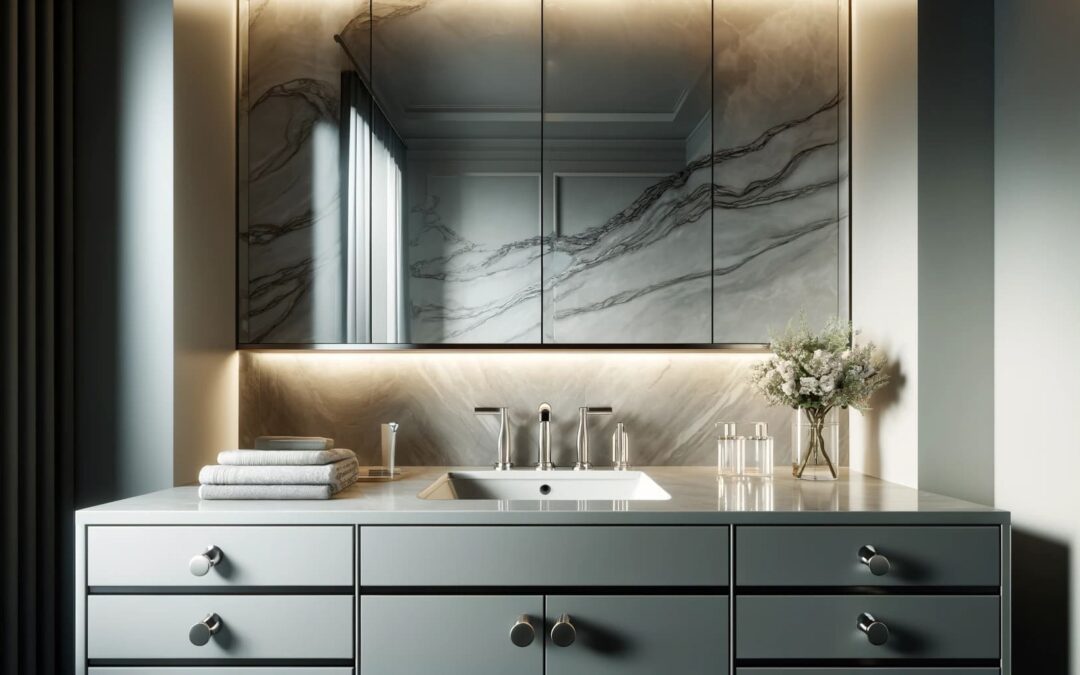Selecting the right tile for your bathroom vanity backsplash is more than just picking a color or pattern. It’s about finding a balance between functionality and style, ensuring durability while enhancing the overall aesthetic of your bathroom. The backsplash not only protects your walls from water and cosmetic stains but also serves as a focal point in your bathroom’s design. Here’s a guide to help you choose the best tile for your bathroom vanity backsplash, considering various factors such as material, size, color, and maintenance.
1. Consider the Material
The choice of material is crucial because it determines the durability, ease of cleaning, and overall look of the backsplash. Here are some popular options:
- Ceramic and Porcelain Tiles: These are the most commonly used materials for bathroom backsplashes due to their durability and low maintenance. They come in a wide range of colors, shapes, and sizes, and are resistant to stains and moisture.
- Glass Tiles: Offering a modern look, glass tiles reflect light and make the space appear brighter and larger. They are easy to clean and come in various translucent styles, which can add depth to your design. However, they can be more prone to scratches.
- Natural Stone Tiles: Options like marble, granite, and slate bring a touch of luxury and uniqueness to your backsplash, as no two stone tiles are exactly alike. Keep in mind that natural stone requires more maintenance and regular sealing to prevent stains.
- Metal Tiles: Metal tiles, such as those made from copper or stainless steel, can add a sleek, contemporary feel to your bathroom. They are also durable and easy to clean, although they may require specific cleaning products to maintain their shine.
2. Size and Shape Matter
The size and shape of the tiles can significantly affect the appearance of your backsplash. Smaller tiles, like mosaics, can add intricate detail and are good for curved or narrow spaces. Larger tiles provide a more modern and streamlined look and can make a small bathroom feel bigger. The shape of the tile, whether it’s rectangular, hexagonal, or any other geometric pattern, can also add visual interest and texture to your bathroom.
3. Color and Pattern
Choosing the right color and pattern for your backsplash should complement the overall color scheme of your bathroom. Neutral colors like beige, gray, or white can make the space feel clean and bright, while bold or dark colors can create a dramatic effect. Patterns can range from simple, uniform layouts to elaborate mosaics. If your bathroom fixtures and accessories are simple, a vibrant or patterned backsplash can serve as a statement piece.
4. Maintenance and Durability
Consider how much time you are willing to spend on maintenance when choosing your backsplash tile. Porcelain and ceramic are low-maintenance and easy to clean, while natural stone and glass might require more care to keep them looking new. Also, think about the longevity of the material. A high-quality tile that can resist wear and tear over time is a wise investment.
5. Reflect Your Style
Ultimately, the backsplash is a reflection of your style. Whether you prefer a classic look or a bold, modern aesthetic, your choice of backsplash should align with your overall design vision for the bathroom. Don’t be afraid to mix materials, play with color gradients, or implement unique layouts to create a custom look that delights you.
Conclusion
Your bathroom vanity backsplash is not just a practical addition but a creative element that enhances the beauty of your bathroom. By carefully selecting the material, size, color, and pattern of the tiles, you can create a backsplash that is both functional and stylish. With the right choice, your bathroom backsplash can transform an ordinary space into a striking showcase of your style.

